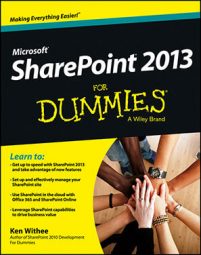When you choose the columns to display in your SharePoint view, you see many columns that are usually behind the scenes, including Edit menu options.
Column options include
Edit (Linked to Edit Item): Displays an icon that a user can click to edit the item. This column is useful when you don’t want to display the Title column.
Title (Linked to Item): Displays the Title column with a hyperlink to the list item or document. When a user clicks the hyperlinked title, a web page opens and displays the app item or opens the document.
Title (Linked to Edit with Edit Menu): When a user hovers his mouse over this column, the Edit menu appears.
You may want Edit menu columns on my app page for a member to modify items, however you generally won’t want them in your app Web Parts on home pages and publishing pages (in that case, most people just want users to click a link to open a document or only view the app data as a table).
Other columns you may have available to add to your view include
ID displays the identity number of the item. The ID number is used to display the item’s values in a form.
Version displays the version number of the item or document. This allows you to easily see what the latest version of a document is.
Checked Out shows who has the document checked out.
Folder Child Count displays the number of folders contained within a folder.
Item Child Count displays the number of items contained within a folder.
Content Type displays the content type associated with the item or document.
When you create a view, you often realize that you want to display a column that’s based on a value calculated from another column. For example, if your app displays an anniversary date, you may want to calculate years of service. You can do that by creating a new column and then displaying it in your view.
You can also modify and create views using SharePoint Designer. In Designer, you have access to even more columns and the ability to use formatting and formula tools to further transform the presentation of your content.

